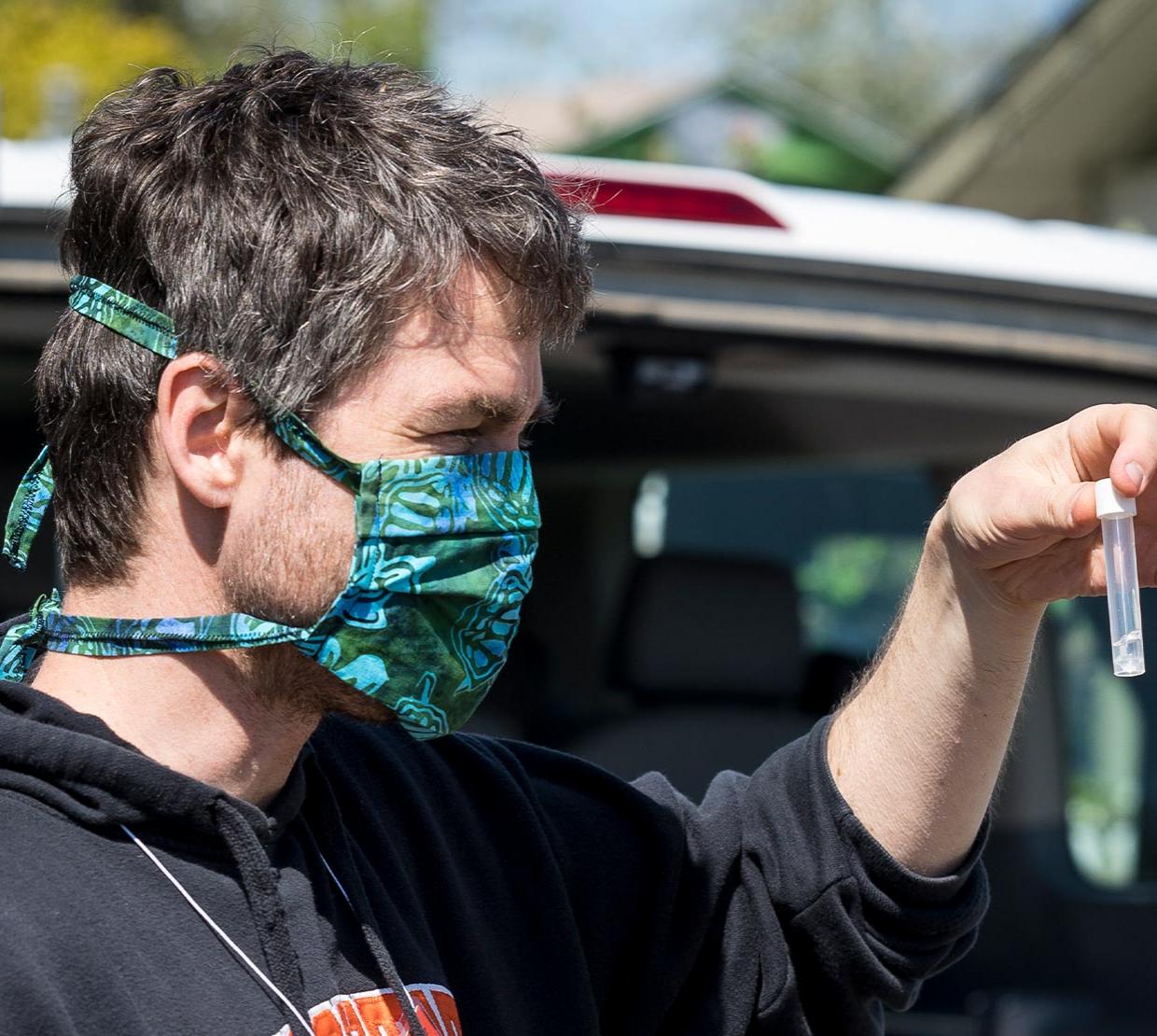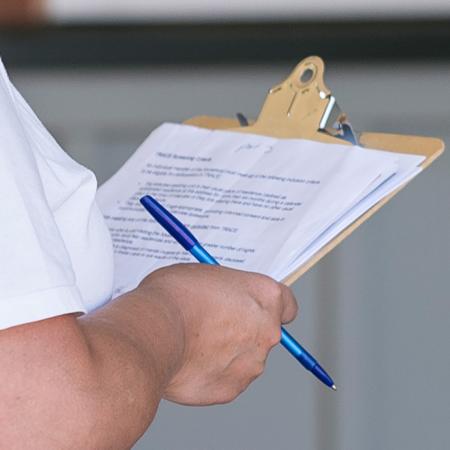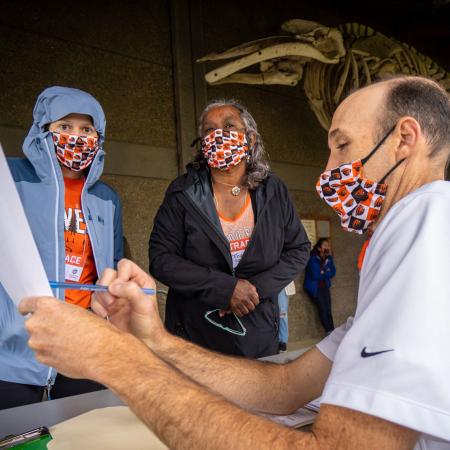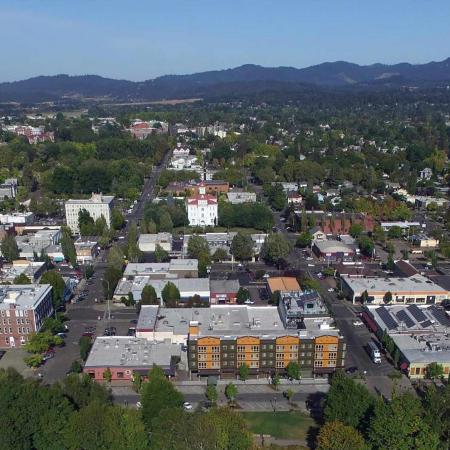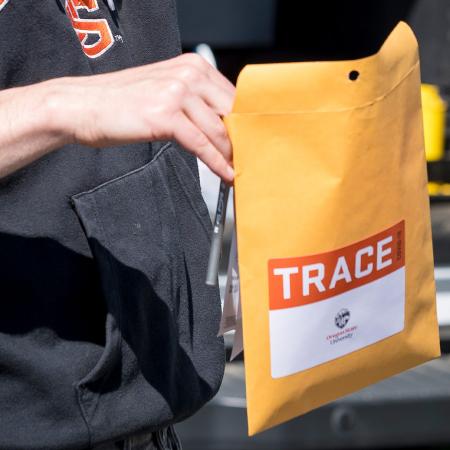CORVALLIS, Ore. – Oregon State University’s fifth round of door-to-door sampling throughout the Corvallis community by TRACE-COVID-19 field workers on Sept. 26 and 27 suggested three people per 1,000 in the community carried the novel coronavirus on those days.
“It is encouraging that the prevalence of the virus in Corvallis remains relatively low,” said TRACE project leader Ben Dalziel, an assistant professor in the OSU College of Science. “The prevalence estimate is slightly higher than it was during sampling in April, May and June but from a statistical standpoint is not different from those earlier dates.”
Dalziel said the estimate is based upon the number of people who tested positive among those tested over the weekend, the sensitivity of the test and other sampling factors including the number of people tested and the locations of those who tested positive. He said the upper bound of prevalence of Corvallis may be nine out of 1,000 people, taking into account uncertainty from the weekend sample and testing.
Wastewater analyses by Oregon State from Sept. 26 and 27 are consistent with the three-per-1,000 prevalence estimate, added Tyler Radniecki, a researcher in the College of Engineering and one of the TRACE project’s principal investigators.
Genetic material from the SARS-CoV-2 virus, shed by people who are infected, remains present in Corvallis sewage overall at “low to moderately low” levels and in the most recent sampling, genetic markers from the virus were detected in wastewater from four of the six neighborhoods sampled, he said.
“Wastewater results suggest the virus has been in the Corvallis community since late July and continues to be present,” Radniecki said. “The results also tell us that the virus is not isolated to a single neighborhood but can be found in many areas of the community. Our neighborhood results are very similar to those of other OSU scientists studying wastewater who are using slightly different methodologies.”
During the latest round of door-to-door canvassing, TRACE field workers received samples from 580 community members at 354 homes. During the sampling, nearly 71% of the households visited agreed to participate.
Of those sampled, between one and nine of the people tested positive for the virus. Following reporting policy set by the Oregon Health Authority, TRACE does not report the actual number of positive tests if the total is greater than zero but fewer than 10 people.
“Continued caution and adherence to public health guidelines such as social distancing, frequent hand-washing, and wearing face coverings are warranted even with this low prevalence,” said TRACE co-leader Jeff Bethel, an associate professor in OSU’s College of Public Health and Human Sciences. “Especially as we shift into fall and people spend more time indoors.”
In wastewater analyzed by Radniecki’s team, viral evidence was not detected in samples from two neighborhoods: southwest Corvallis and the area surrounding Good Samaritan Regional Medical Center. The SARS-CoV-2 genetic signal was present but low in north Corvallis, downtown (which includes the OSU campus) and South Town, and moderate in mid-Corvallis.
During door-to-door sampling, those who choose to take part are asked to provide information such as their name and date of birth; fill out a simple consent form; and answer a few confidential, health-related questions.
Participants are given a nasal-swab test kit that they administer to themselves inside their home and to their minor children if they want them to take part. The field staff wait outside, and the participants leave the completed test kits outside their front door.
The field workers provide participants with information about the project and how they will receive their results – available in seven to 10 days – as well as health guidance from the Benton County Health Department and the Centers for Disease Control and Prevention. Participants in the effort will receive their results and those of their minor children by secure email with receipt by mail as a backup. Personal information will be safeguarded.
The TRACE project is a collaboration of five OSU colleges – Science, Agricultural Sciences, the Carlson College of Veterinary Medicine, Engineering, and Public Health and Human Sciences – plus the OSU Center for Genome Research and Biocomputing. The project works in partnership with the Benton County Health Department in Corvallis and other county health departments around the state.
The diagnostic testing component of TRACE operates through a partnership between the Oregon Veterinary Diagnostic Laboratory, which is located at OSU, and Willamette Valley Toxicology.
TRACE-COVID-19 has received funding from OSU, the David and Lucile Packard Foundation, PacificSource Health Plans and the Oregon Health Authority and has been aided by work from the OSU Foundation and the OSU Alumni Association.
For more information about TRACE, visit the TRACE-COVID-19 website. The site includes a list of frequently asked questions.
This story was originally posted by the Oregon State University newsroom.
